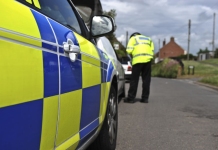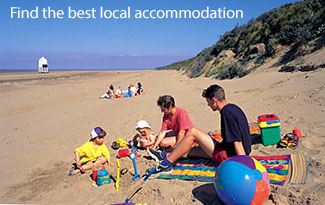Brent Knoll history and background
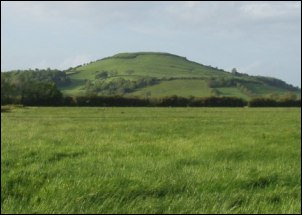 Brent Knoll was known by the Romans as The Mount of Frogs and stands as an outcrop on the Mendip Hills. It is 449 feet tall – some 137 meters high – and those it walk up it are rewarded with superb views of the Polden Hills to the south, Glastonbury Tor to the east, the Mendip Hills and Cheddar Gorge to the north east, the Bristol Channel and Wales to the west and the Quantock Hills to the south west.
Brent Knoll was known by the Romans as The Mount of Frogs and stands as an outcrop on the Mendip Hills. It is 449 feet tall – some 137 meters high – and those it walk up it are rewarded with superb views of the Polden Hills to the south, Glastonbury Tor to the east, the Mendip Hills and Cheddar Gorge to the north east, the Bristol Channel and Wales to the west and the Quantock Hills to the south west.
The Knoll dates from the Jurassic times 300 million years ago when dinosaurs, primitive mammals and strange birds roamed the area. A warm, shallow sea washed around its slopes thus giving its other name of “Frog Island.”
The outcrop of clays and limestone soon attracted primitive man as a secure and advantageous place. Subsequently, Bronze Age and Iron Age people set up home on the summit which became a focus for religious activity. The Romans are known to have built a temple there, and Roman coins of the Emperor Trajan (AD98 -117) and Septimus Severus (AD145 – 211) were found in an urn on the Knoll in 1610.
Anglo-Saxons coming up the Bristol Channel are believed to have made good use of the Knoll as a look-out post. They were followed by the Vikings, known for their ferocity, so much so that the monks would offer up the earnest prayer: “From the fury of the Norsemen, O Lord, deliver us!”
On its eastern slopes is the site of a battle in AD875 when the Saxons drove away the Danes. Hence, the village has the “Battleborough Grange” Hotel, and nearby Battleborough Lane. The Hotel caters for local people, as well as visitors to the area.
The Domesday Book, commissioned by William I in AD 1086 shows the make-up of the land near the Knoll. About 250 people were living around its base, earning a poor existence. The land was marshy and often in flood, but dried out for summer farming. The next 200 years saw more efficient use of land, better drainage, an absence of invaders, rule of law and increased trade.
The Lay Subsidy Returns of AD 1327 set out actual names of about 180 residents from whom tax would be extracted. Including East Brent about 600 persons were living in the area at that time. Intricate patterns of rhynes helped improve the fertility of the land and attract people.
During the English Civil War (1641 – 1645) some Royalist soldiers caused mayhem in the village. Under the leadership of John Somerset, local people rose up against the plunderers. His effigy and those of his family may be seen in the church.
In AD 1607 the whole of the Vale of Avalon flooded to the depth of twelve feet as far as Glastonbury. In AD 1703 the sea broke across the land again. Drainage efforts increased in the 18th and 19th centuries and made living in the village a more viable proposition.
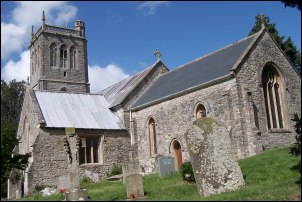 The 1801 population of 500 persons had doubled by 1841 due to the temporary presence of itinerant railway workers building the Bristol to Exeter railway which runs north-south near the western base of the Knoll. Between 1875 and 1883 the village name was changed from South Brent to Brent Knoll to avoid passenger confusion with the village of South Brent in Devon.
The 1801 population of 500 persons had doubled by 1841 due to the temporary presence of itinerant railway workers building the Bristol to Exeter railway which runs north-south near the western base of the Knoll. Between 1875 and 1883 the village name was changed from South Brent to Brent Knoll to avoid passenger confusion with the village of South Brent in Devon.
By 1901 village population had declined to 688 persons. By 1961 it had risen barely 10%. But with the coming of the M5 Motorway, completed in 1974, people were attracted to the village so that by 1981 there were 1,092 souls.
Today, several orchards grow on its lower west facing slopes. Cider making is still a small but thriving industry. Formerly a farming village, Brent Knoll is now made up of several modern developments interspersed with original but modernised farm buildings. It has a mixed population with a proportion of retired people who enjoy its quiet atmosphere.
At the A38 junction, once a turnpike road, stands the newly refurbished Fox and Goose Inn. Originally a coaching inn mentioned on the tithe map of 1811 it was the home of the Kennels of the Brent and Wedmore Harriers. Its grounds were also home to deer which were kept for twice weekly hunts. On the Inn’s side wall may be seen a Victorian Post Box.
Along Brent Street and Burton Row stand various modernised farm dwellings mixed with modern homes. Briars Cottage is dated 1688 and near the Parish Hall may be seen Ivyclad Hall, built during the reign of Queen Anne. Names of other dwellings such as The Laurels, The Croft, Myrtle, Saddler’s, Phoenix, Courthay, Victoria, Lavender Cottages, Pen Orchard, Tableland Farm, Nightingale Farm, Shrub Farm and the Grange reflect the original rural nature of the village.
In the centre of the village stands the Red Cow Public House, a red bricked building whose style of architecture suggests that parts of it were built in the 18th century at least. Tastefully modernised, it caters for the modern visitor. The Woodlands Hotel, in Church Lane, a modernised farmhouse, caters for the overnight guest as well as the daily visitor. These two establishments afford splendid views of the Knoll’s wooded slopes from where visitors, whilst enjoying food and drink, may watch a variety of bird life, including buzzards and rooks which occasionally have territorial spats. Horses and rabbits roam over the lush wooded pasture.
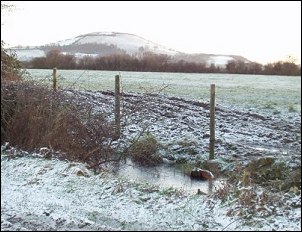 Almost opposite the Parish Hall stands the Village School. Built in 1861 it retains its links with the past. It is a thriving school serving some 120 pupils from the village and the surrounding area.
Almost opposite the Parish Hall stands the Village School. Built in 1861 it retains its links with the past. It is a thriving school serving some 120 pupils from the village and the surrounding area.
The church, dedicated to St Michael, has a Norman doorway but the present nave was built in AD 1290.The pulpit dates from the 17th century. The most interesting features of the interior are the finely carved bench ends illustrating the story of Reynard the Fox. The remaining benches show various devices and grotesques.
In AD 1837 a Chapel was erected by the Bible Christian Society. The founder of Methodism, the preacher John Wesley once climbed the Knoll and declared: “I know not wherever I saw such a prospect.”
Nestling on the lower western slopes of the Knoll stand the large residences of the Manor House, and Ball Copse Hall which enjoy splendid views over the flat land towards Burnham-On-Sea. Their dominating presence adds to the ambience of the village.
Other features of the village are the Reservoir halfway up the Knoll. Several footpaths lead towards neighbouring East Brent and afford wonderful views of Uphill and the southern environs of Weston Super Mare. Walkers are strongly requested to keep to the clearly sign posted footpaths.
Foxes, rabbits and badgers inhabit this area which has a range of wild flowers and insects. On the flat land to the west you may spot a hare. Apart from the usual garden birds, buzzards may be seen circling on thermals, two varieties of woodpecker may be heard, flocks of long tailed tits will suddenly appear. Jays, kestrels and sparrow hawks are also common.
RELATED LINKS:







